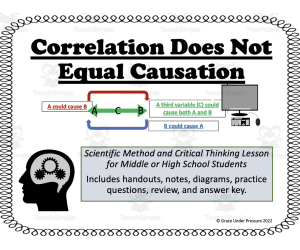2,410 products added recently
Psychology Experiments For Students
Explore the fascinating world of psychology with experiments that help students understand human behavior and mental processes. This collection includes perception tests, memory challenges, and social behavior studies. By incorporating these psychology experiments into your teaching, you can promote critical thinking and self-awareness.
Culture Lesson: Cultural Norms and Avoiding Stereotypes Worksheets
Social Studies, Psychology, Life Studies, Grade 5, 6, 7, Worksheets & Printables, Worksheets, Activities, Experiments, Lesson Plans, Teacher Tools
Do you want your students in grades 5-7 to learn how to become global citizens who can respect a variety of cultural norms and comprehend cross-cultural differences? Are you looking for a fun way to bring all of these ideas to life? Check out this ready-to-go lesson for your class. This 5-Page PDF is ready to print for your social studies classroom. It includes clear teacher instructions for a fun class simulation where half of your students will act out a new "class norm" (five options are provided such as not raising your hand to ask a question) that the other half of your class won't be expecting. While the simulation is happening, everyone will be working on a three page reading comprehension task. Students will read about cultural norms from around the world (slurping noodles when eating in Japan or nodding one's head to say "no" in Bulgaria). They will imagine how not knowing about the cultural norms in a place where they are travelling could lead to accidental misunderstandings. Students are also taught a simple definition of the concept of stereotypes, and they will think of how they are different from cultural norms. Finally, there is a 1-page reflection with prompts- perfect for after a class discussion. Teacher Instructions: 1. Split your class in two and talk to only one half. 2. Tell them that they will have a new “class cultural norm.” Pick one from the provided ideas. 3. When the whole class is reunited, pass out the reading page & worksheets. Students read about cultural norms and answer the questions. 4. As they work, the selected half will enact their new norm, which will confuse the other half of the class. 5. Once the point has been made, let the other half in on the secret. 6. Have a discussion about cultural norms and give students time to write a reflection about this lesson.
Author Grace Under Pressure
Tags Culture, Stereotypes, Cultural, Culture Worksheets, Cross Culture, Travel, Norms, Cultural Norms, Class Simulation, Simulation
Correlation Does Not Equal Causation: Scientific Method and Critical Thinking Lesson for Middle Grades or High School
Social Studies, History, Psychology, Science, Basic Science, Grade 6, 7, 8, 9, 10, 11, 12, Activities, Experiments, Worksheets & Printables, Worksheets
Scientific Method and Critical Thinking Lesson for Middle or High School Students This lesson walks students through correlation and true experiments in an easy-to-understand and engaging manner. 12 different correlation examples are included. The package includes handouts, notes, diagrams , practice questions, a review, and answer key. How to Use: Print a 7 page package for each of your students. Present pages 1-4 on an interactive whiteboard and teach your students the basics of correlation (scatterplots, positive correlation, negative correlation, correlation coefficients, mistaking correlation as causation, media examples, reverse causation, third variables, etc.) as they fill in questions and notes. Then, students can do the practice questions on their own or in small groups (answer key included). Next, present page 6 to explain how to actually find causation in a true experiment : random selection, random assignment, dependent variable, independent variable, experimental group, control group, etc. Finally, students complete a one-page review (answer key included) Grades to Use With: This lesson was designed to be accessible to students as young as grade six all the way through high school. It could be an addition to a science unit about experimental methods, a science fair unit, a grade 8 math unit about scatter plots, or even a psychology class. Standards: CCSS8.SP.A.1 Construct and interpret scatter plots for bivariate measurement data to investigate patterns of association between two quantities. Describe patterns such as clustering, outliers, positive or negative association, linear association, and nonlinear association. CCSS8.SP.A.2 Know that straight lines are widely used to model relationships between two quantitative variables. For scatter plots that suggest a linear association, informally fit a straight line, and informally assess the model fit by judging the closeness of the data points to the line.
Author Grace Under Pressure
Tags Correlation, Causation, Critical Thinking, Scientific Method, Experiments, Reasoning, Experiment, Science Fair, Basic Science, Research, Mistaking Correlation For Causation



